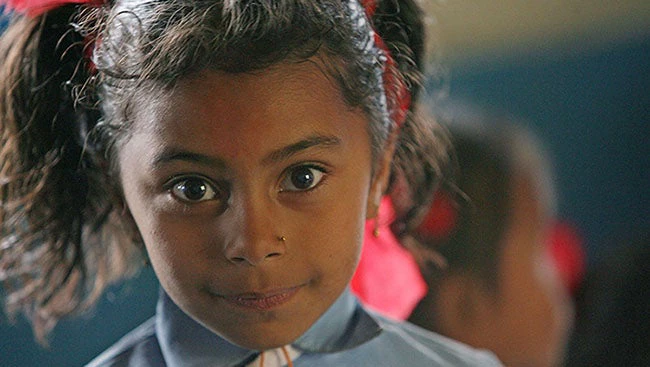
Corporal punishment remains widespread. According to the Global Partnership to End Violence against Children, globally, 4 in 5 children aged 2-14 are subjected to corporal punishment and 86 percent of the world’s children are not protected from corporal punishment by law. Most instances of corporal punishment take place at home, but the practice also remains prevalent in schools in many low- and middle-income countries . (see Gershoff and Heekes et al. on prevalence estimates)
New analysis confirms the negative impacts of corporal punishment in schools
A new meta-analysis confirms that school corporal punishment is positively associated with lower performance in school, in line with findings of previous systematic reviews, including those by Gershoff and Heekes et al.
The meta-analysis published online last month by Visser et al. also suggests that school corporal punishment is positively associated with both negative externalizing and internalizing behaviors. The meta-analysis includes 55 studies and reviews the literature on the association between school corporal punishment and children’s:
- externalizing behavior (21 studies and 120 effect sizes),
- internalizing behavior (14 studies and 18 effect sizes), and
- performance in school (20 studies and 47 effect sizes)
Externalizing behaviors are defined as outwardly directed. They include aggression, conduct problems, hyperactivity, and hostile behavior. Internalizing behaviors are defined as inwardly directed and include anxiety, depression, social inhibition, and psychosomatic complaints. School performance is measured through metrics such as grades and performance on standardized tests.
One-third of world’s countries still allow the practice
April 30 is the International Day to End Corporal Punishment of Children. The Global Partnership to End Violence against Children and the End Corporal Punishment Initiative have made available an advocacy and communications package for the Day based largely on a global report published last year. The package and global report show that a growing number of countries (63 at last count) have adopted legislation prohibiting all corporal punishment of children, whether by teachers, parents, or other individuals. Yet today, only 14 percent of the world’s children are protected by such comprehensive legislation. In schools specifically, corporal punishment is not legally prohibited in 64 countries. Among these countries, about half have policies or ministerial orders against the use of corporal punishment in schools, and many are adopting reforms to prohibit corporate punishment in schools. These efforts are to be commended, but they will need to reach completion to ensure that all countries have legal frameworks that penalize the corporal punishment of children in schools.
The cost of corporal punishment and violence in schools is high
Violence is highly traumatic. The trauma that corporal punishment and, more generally, violence inflicts on children can be severe, with effects lasting throughout their lives. Last year the World Bank released an investment case to end violence in schools showing the high cost of inaction (estimated at $11 trillion globally over children’s lifetime) and reviewing the types of interventions that can reduce violence in schools, including corporal punishment. Interventions should start in early childhood and continue in primary and secondary schools. The study argues that they typically have high benefit to cost ratios, which means that every dollar invested generates multiples in terms of future benefits for children.
Interventions to prevent corporal punishment and violence in schools are affordable
As mentioned in a previous blog, most impact evaluations of programs to reduce violence in school have been conducted in high income-countries, but on how to reduce violence by teachers in schools, we can learn a great deal from the Good School Toolkit (GST), a program piloted in Uganda. Through positive discipline, empathy, reflection, and the promotion of new behaviors, an evaluation suggests that the program reduced physical violence by teachers and school staff by 42 percent while also contributing to student well-being and same time teachers’ satisfaction with their role in their school.
One concern sometimes raised about implementing violence prevention programs is their potential cost. In contexts where needs in schools are massive and resources limited, Ministries of Education may hesitate to invest in programs to reduce violence, including corporal punishment. Yet the cost of these programs can be low when scaled up. When GST was piloted, the cost of running the program was at US$ 15 per child, according to an economic evaluation. Given the benefits of the program, this compared favorably against other violence reduction interventions in the region. But there is more good news: simulations suggest that if the program were scaled up nationally, the unit cost per child per year could be reduced dramatically to just a few dollars. And after a few years, these costs would mostly consist of the time allocated by teachers to implement the program, which is already paid for since teacher pay is included in national budgets. These types of programs are not only highly beneficial: they are also affordable.
Preventing violence in schools is critical to responding to the learning crisis
At the World Bank, we recognize the intrinsic link between violence prevention and learning. This is why ensuring that schools are safe and inclusive is one of five pillars to realizing the future of learning. The importance of preventing violence in schools is starting to be better recognized by the international community, as witnessed by the Safe to Learn Initiative, of which the World Bank is a key partner together with 13 other global partners. Ensuring that schools are inclusive, equitable, safe, and healthy is the first action track of the Transforming Education Summit to be convened by the UN Secretary-General in September 2022.
Preventing corporal punishment and violence in school is not only the right thing to do; it is also a smart investment for Ministers of Education, Ministers of Finance, and their partners who seek to respond to the learning crisis and ensure the future of learning.





Join the Conversation